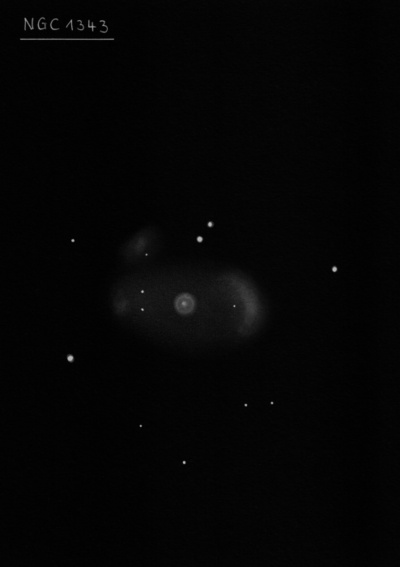
William Herschel discovered NGC 1343 = H III-694 = h300 on 11 Oct 1787 (sweep 764) and noted "vF, vS, irr R, bM. 360 confirmed it." John Herschel made two observations, recording on 29 Oct 1831 (sweep 378), "F, R, gbM, 15". Close to the double star h 2190." His position is accurate.
400/500mm - 17.5" (10/13/90): fairly faint, fairly small, large brighter core, extremely faint halo elongated 2:1 E-W. A double star (h2190 = mag 13/14 at 15" separation) is off the NNW edge 1.0' from the center.
900/1200mm - 48" (11/2/13): bright, large, elongated 2:1 ~E-W, ~2.2'x1.1', unusually sharply concentrated with a blazing, round core ~0.4' diameter, which is punctuated by a faint stellar nucleus. Two faint stars [14" separations] are superimposed within the eastern side of the halo and faint spiral arcs were visible in the outer halo. An extremely faint companion, identified in NED as HFLLZOA G134.74+13.65, was seen as a very low surface brightness patch 1.2' NE of center. A relatively wide pair of stars (h2190 = 13/14 at 15" separation) is 1' NNW of center. This is an unusual "nuclear ring" galaxy with intense starburst activity in the ring.
Notes by Steve Gottlieb